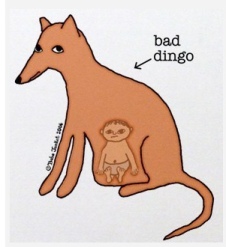As we did for Victoria, here’s our submission to South Australia’s proposed changes to its ‘wild dog’ and dingo policy (organised again by the relentless and venerable Dr Kylie Cairns):

© Jason Edwards Photography
14 April 2020
The Honourable Tim Whetstone MP, Minister for Primary Industries and Regional Development, South Australia
- cc: The Honourable David Speirs MP, Minister for Environment and Water, South Australia
- cc: Primary Industries and Regions South Australia
- cc: Dr Bradley Page, PIRSA Wild Dog Program
RE: PROPOSED CHANGES TO THE SA WILD DOG AND DINGO POLICY
Dear Minister,
The undersigned welcome the opportunity to comment on the proposed changes to the South Australian (SA) Government’s ‘Wild dog and Dingo’ declared animal policy under section 10 (1)(b) of the Natural Resources Management Act 2004. The proposed changes raise serious concerns for dingoes in SA because it:
1. Requires all landholders to follow minimum baiting standards, including organic producers or those not experiencing stock predation.
- Requires dingoes within Ngarkat Conservation Park (Region 4) to be destroyed, with ground baiting to occur every 3 months.
- Requires ground baiting on land irrespective of whether stock predation is occurring or not, or evidence of dingo (wild dog) presence.
2. Allows aerial baiting of dingoes (aka wild dogs) in all NRM regions – including within National Parks.
3. Uses inappropriate and misleading language to label dingoes as “wild dogs”
We strongly urge the PIRSA to reject the proposed amendments to the SA wild dog and dingo policy. Instead the PIRSA should seek consultation with scientific experts in ecology, biodiversity and wildlife-conflict to develop a policy which considers the important ecological and cultural identity of the dingo whilst seeking to minimise their impact on livestock using best-practice and evidence-based guidelines. Key to this aim, livestock producers should be assisted with the help of PIRSA to seek alternative stock protection methodology and avoid lethal control wherever possible. On the balance of scientific evidence, protection of dingoes should be enhanced rather than diminished. Widespread aerial baiting programs are not compatible with the continued persistence of genetically intact and distinct dingoes in SA.
In this context, we strongly emphasise the following points: Read the rest of this entry »




